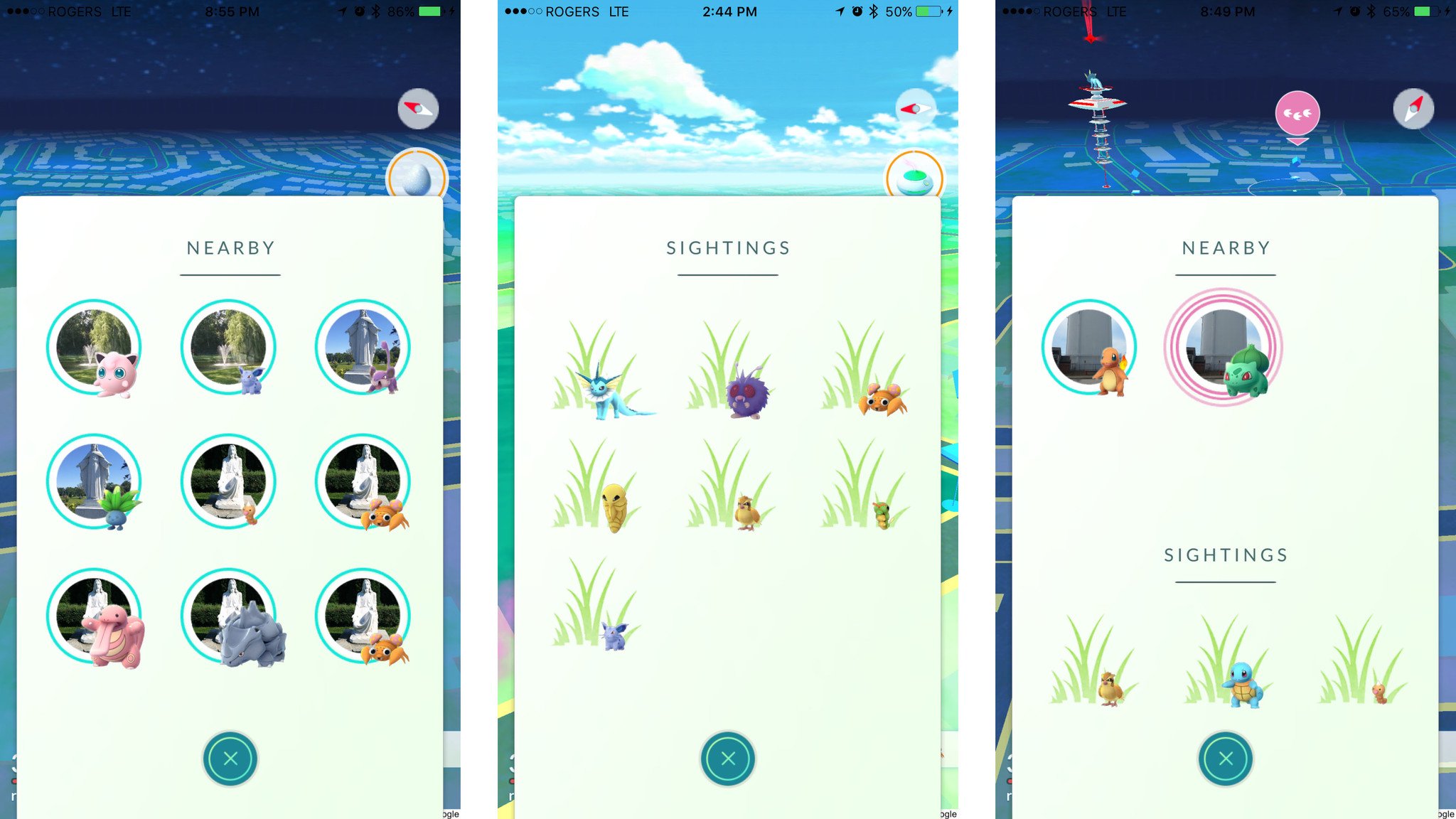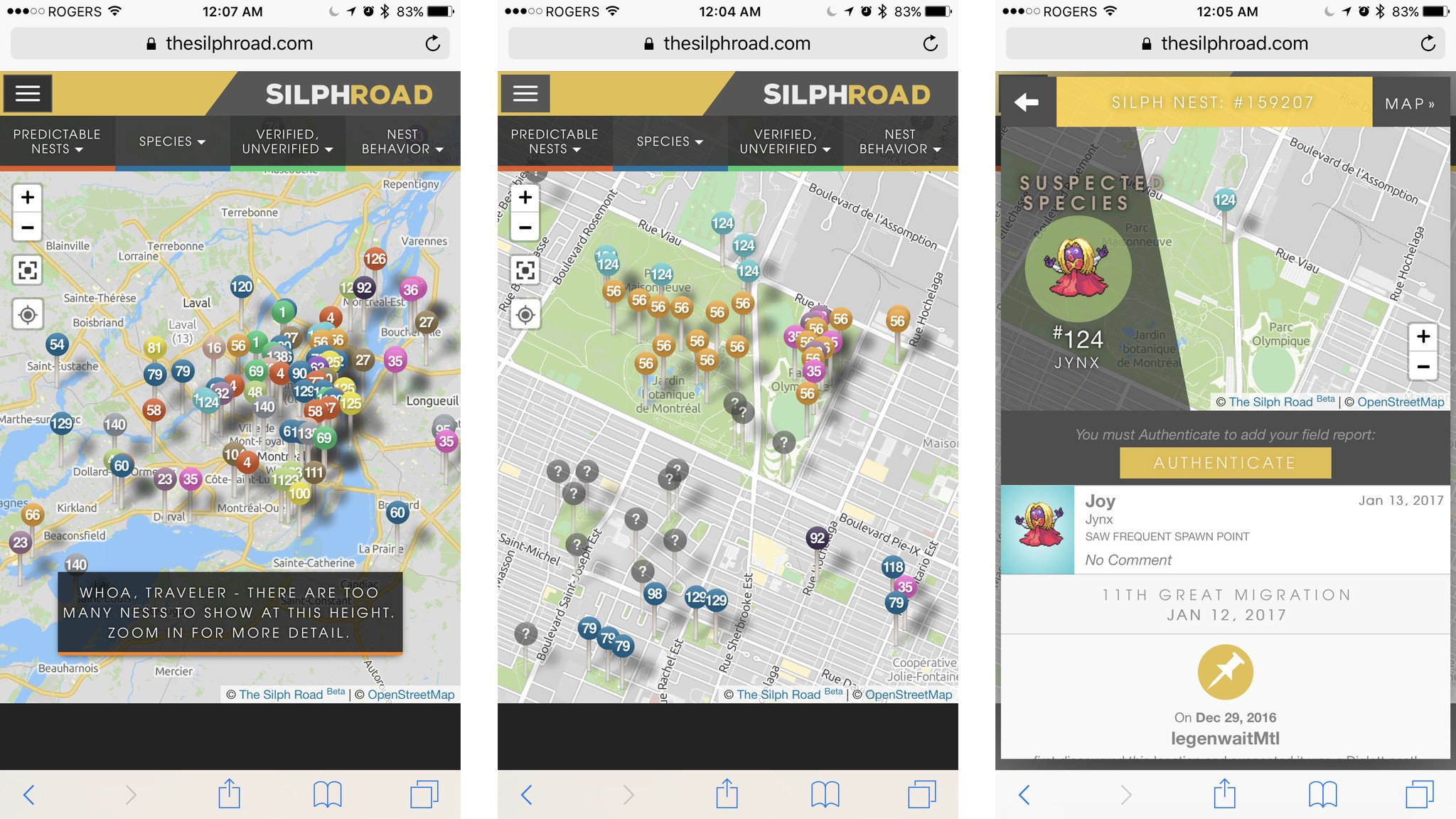Best Pokémon Go tips and tricks for August 2020
Finding: Check your Nearby and Sightings

Pokémon Go includes two distinct forms of detecting the Pokémon in your immediate vicinity. The first is Nearby, which shows you Pokémon hanging around the PokéStops in your area. The second is Sightings, which shows you the Pokémon hiding anywhere close by, ready to spawn.
The Pokémon tab at the bottom right of your travel screen shows you up to three Pokémon. Tap on it, and you'll see up to nine. Depending on what's in your area, they'll be all Nearby, all Sightings, or a mix of both.
Neither Nearby nor Sightings show you every Pokémon around you. If there are a lot of PokéStops in your area and a lot of Pokémon loitering at those Stops, Nearby will only show you a random sampling.
In a perfect world, if a rare Pokémon like Togetic spawned close by, it would override everything else and pop straight to the top. But we live in a very, very imperfect world. So, Nearby, if that Togetic wasn't at a PokéStop, you'd have to walk within 40m or so or risk missing it.
Catch some of the Pokémon at the PokéStops, though, and you thin things out, letting Sightings back in.
I was once out filming a video review, took a spare second to check, and found a Snorlax had spawned right on top of me. When I arrived at a friend's house for dinner, I popped it open and saw a Lapras right on the street corner. It's only happened a handful of times, and I've no doubt missed more than I've caught, but catching any super-rare Pokémon that just happen to be around is better than none.
See how to find rare Pokémon in Pokémon Go
Master your iPhone in minutes
iMore offers spot-on advice and guidance from our team of experts, with decades of Apple device experience to lean on. Learn more with iMore!
Finding: Know your nests

Most Pokémon have "nests," or consistent places where one to four of the same Pokémon will regularly spawn, sometimes even hourly. Sadly, very rare Pokémon like Tyranitar, Dragonite, and Hydreigon don't have any known nests, but others like Electabuzz, Rhyhorn, and all of the Starter Pokémon do.
Nests currently "migrate" every two weeks. These migrations occur at 12 AM UTS (5 PM PST or 8 PM EST) every other Thursday. That's good, because it gives you a couple of weeks to stock up on any good Pokémon at your local nests, but also changes things up fairly quickly if you get stuck with a bad nest. So, over a few months, your Charmander nest might become Slowpoke, Charmander again, Marill, Drowzee, Yanma, Growlithe, and so on. Nest migrations are seemingly random, though, so you never really know what you'll get.
Also, Water type spawns aren't nests because they don't migrate and have multiple Water type Pokémon that spawn together. For example, Staryu, Remoraid, Magikarp, and Wailmer often all spawn at ports, beaches, and lakes.
The same goes for a few others, like electric spawns. Find a big electric center at a university or other large structure, and don't be surprised if you find Magnemite and Voltorb aplenty along with it.

Rene Ritchie is one of the most respected Apple analysts in the business, reaching a combined audience of over 40 million readers a month. His YouTube channel, Vector, has over 90 thousand subscribers and 14 million views and his podcasts, including Debug, have been downloaded over 20 million times. He also regularly co-hosts MacBreak Weekly for the TWiT network and co-hosted CES Live! and Talk Mobile. Based in Montreal, Rene is a former director of product marketing, web developer, and graphic designer. He's authored several books and appeared on numerous television and radio segments to discuss Apple and the technology industry. When not working, he likes to cook, grapple, and spend time with his friends and family.
